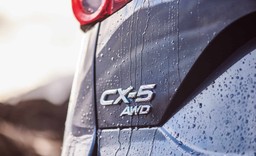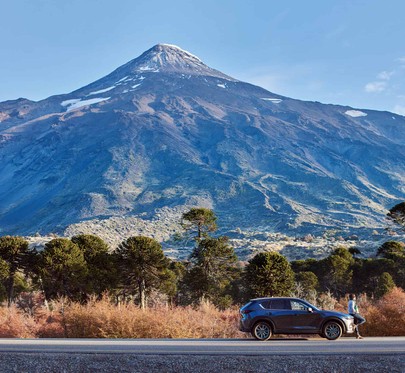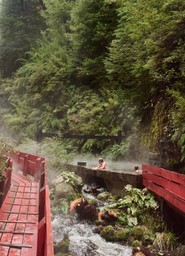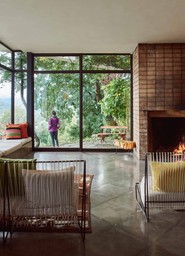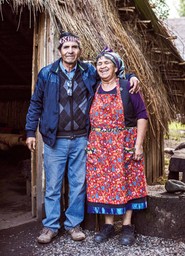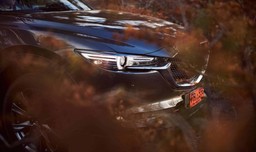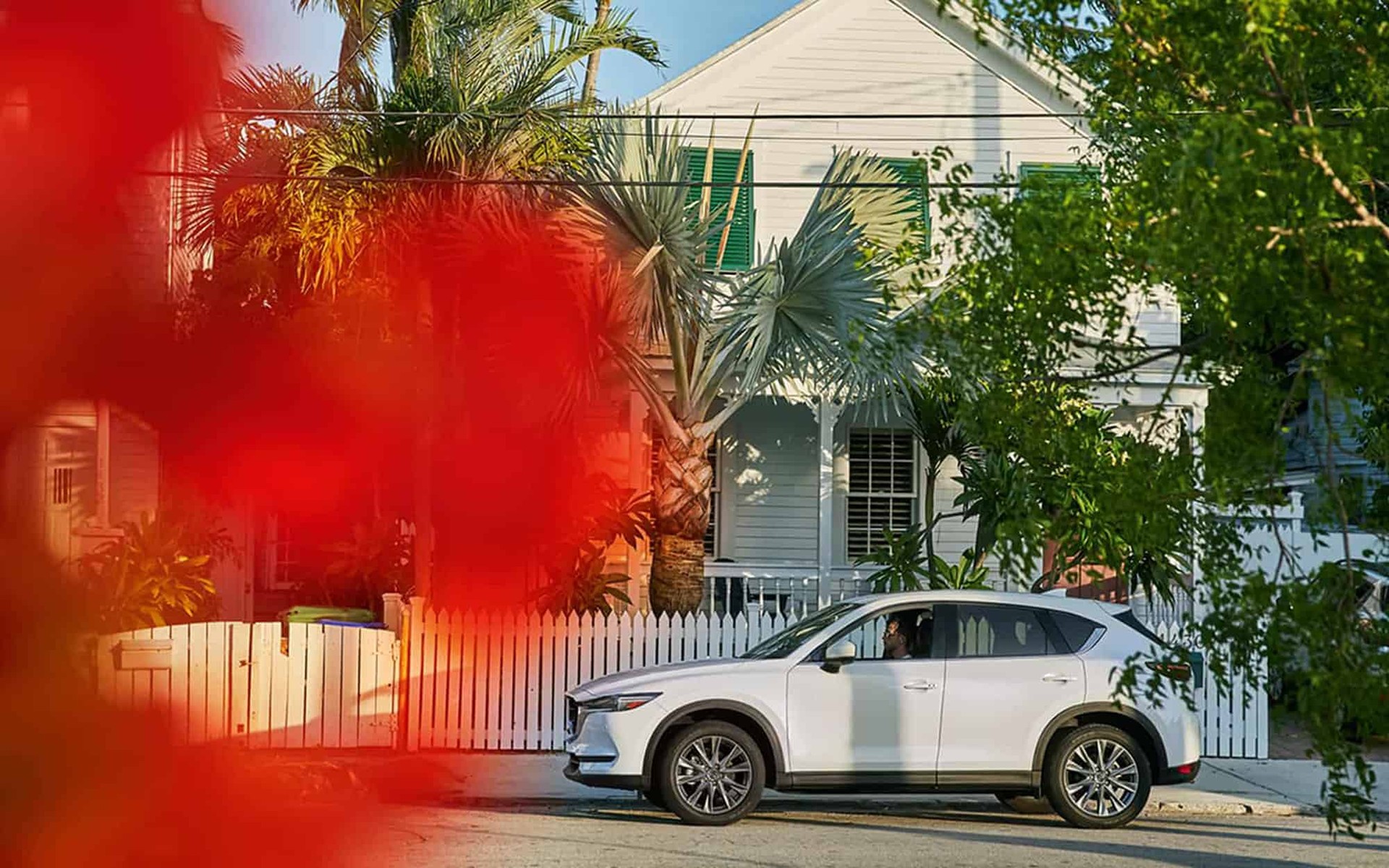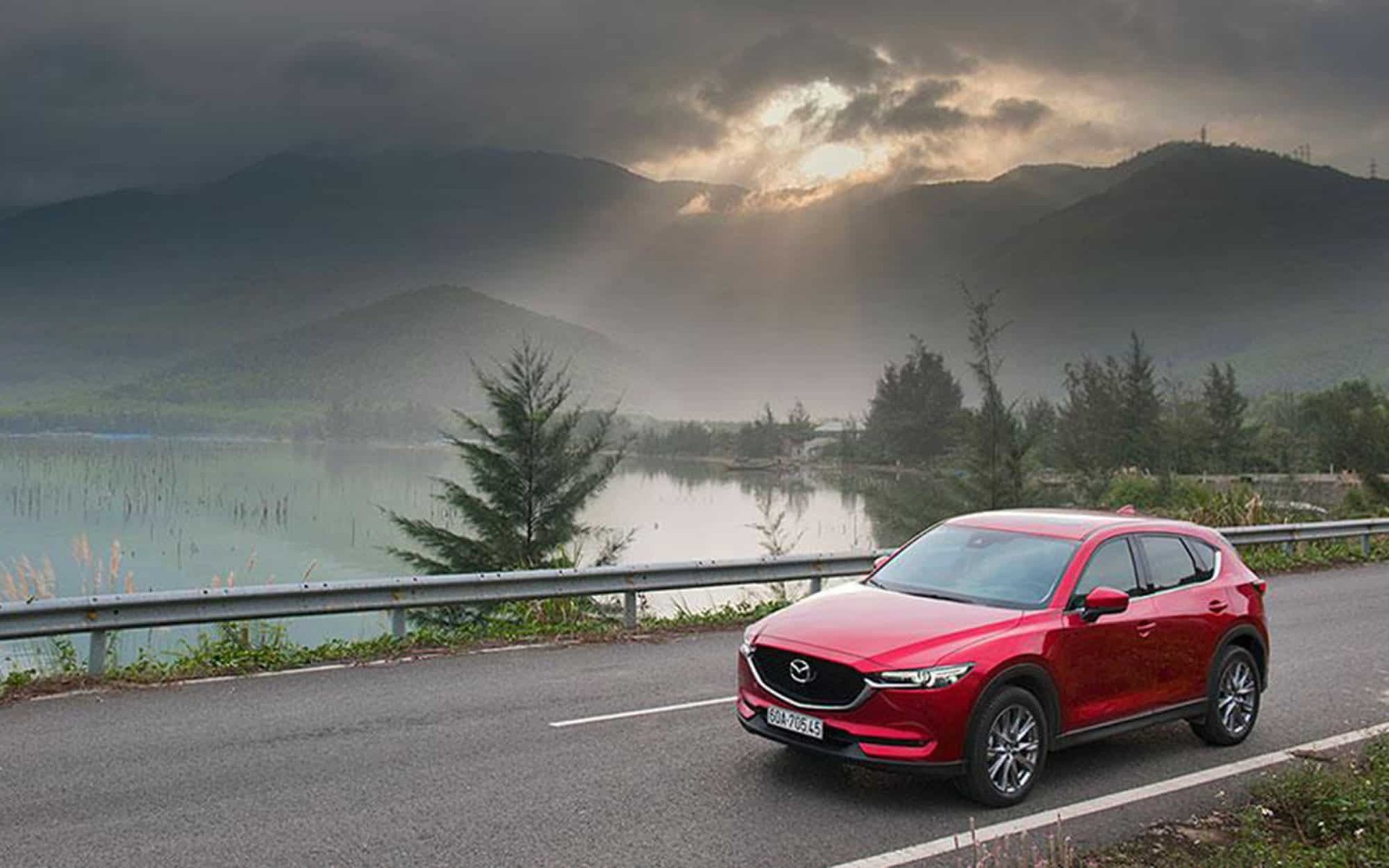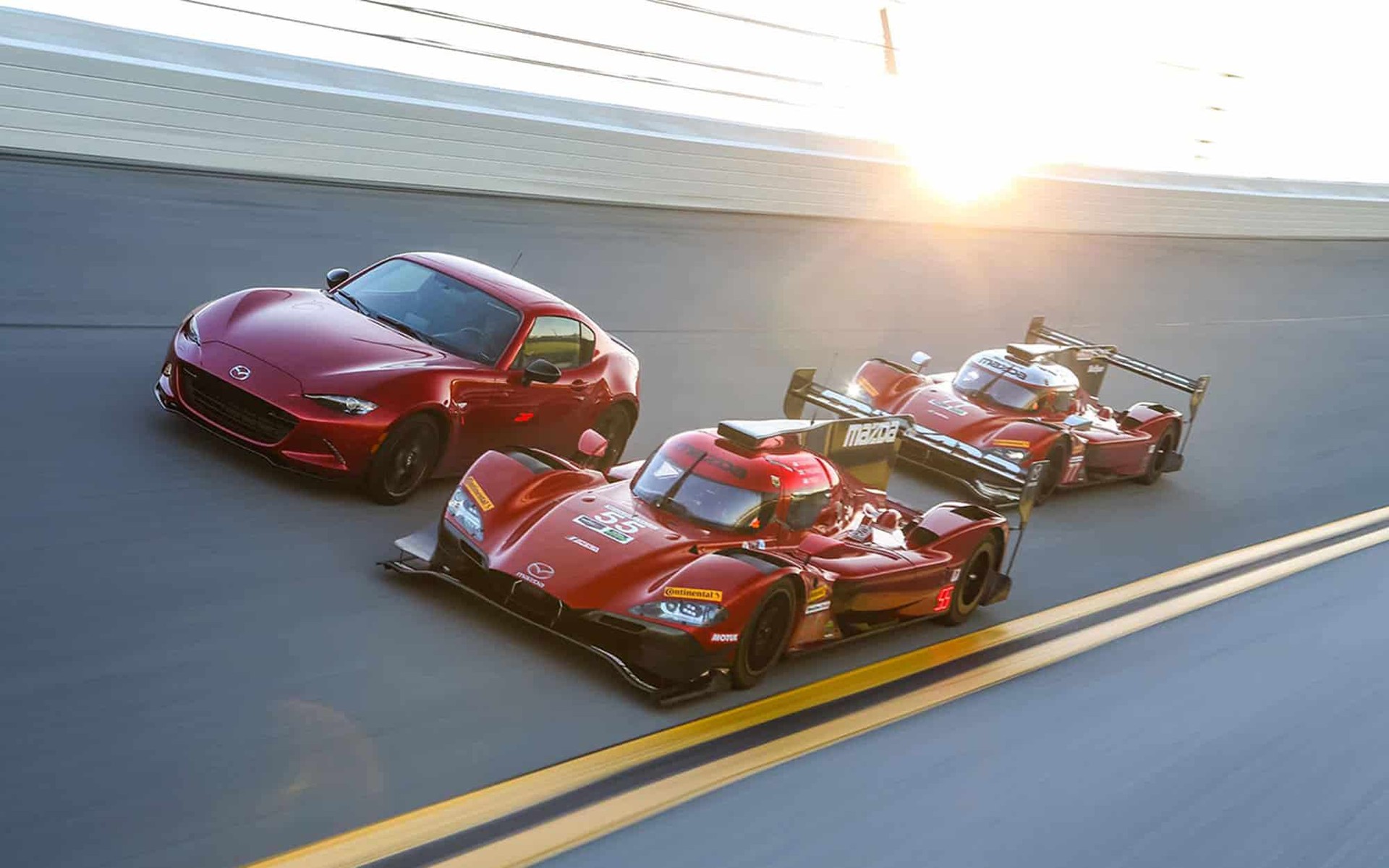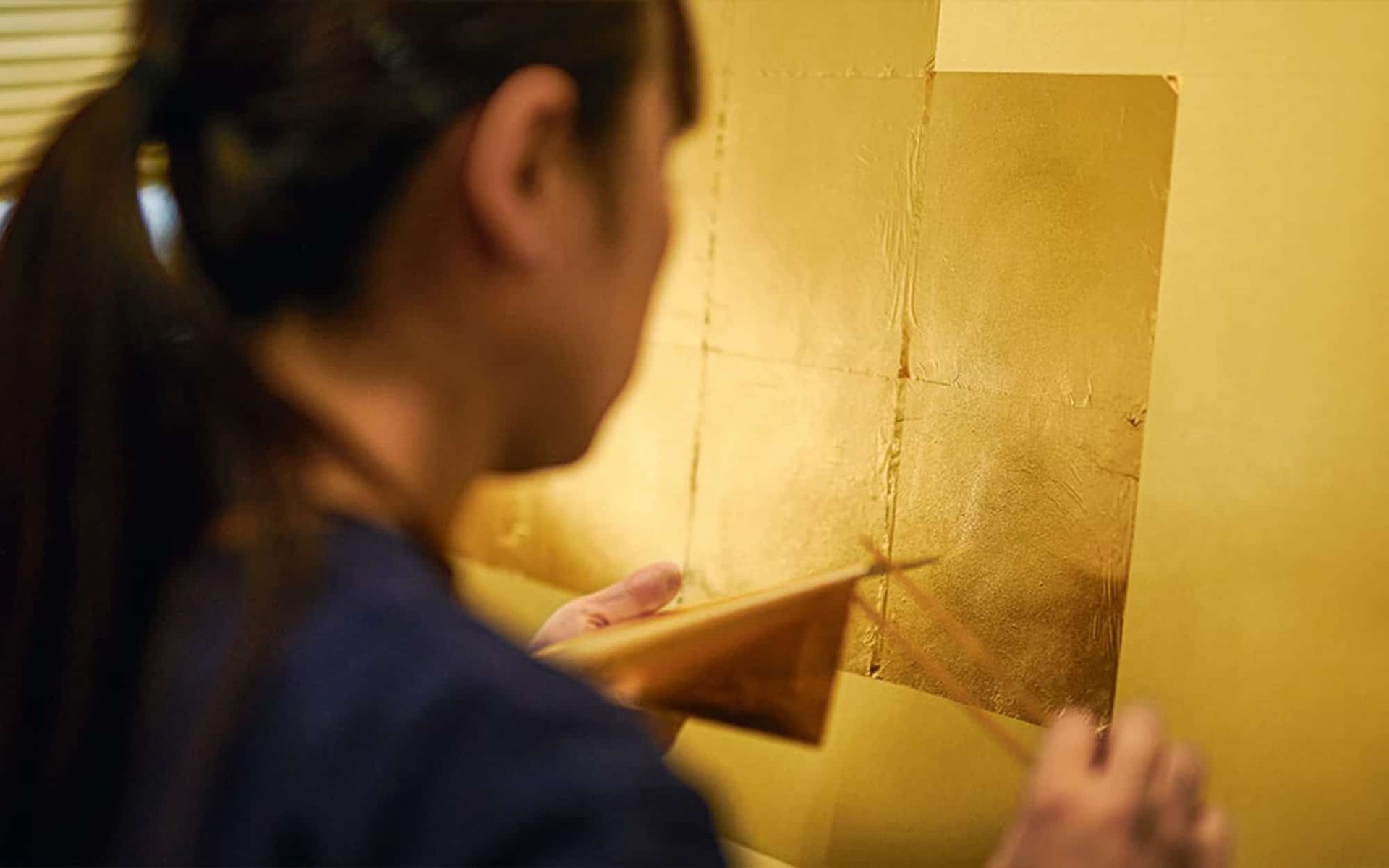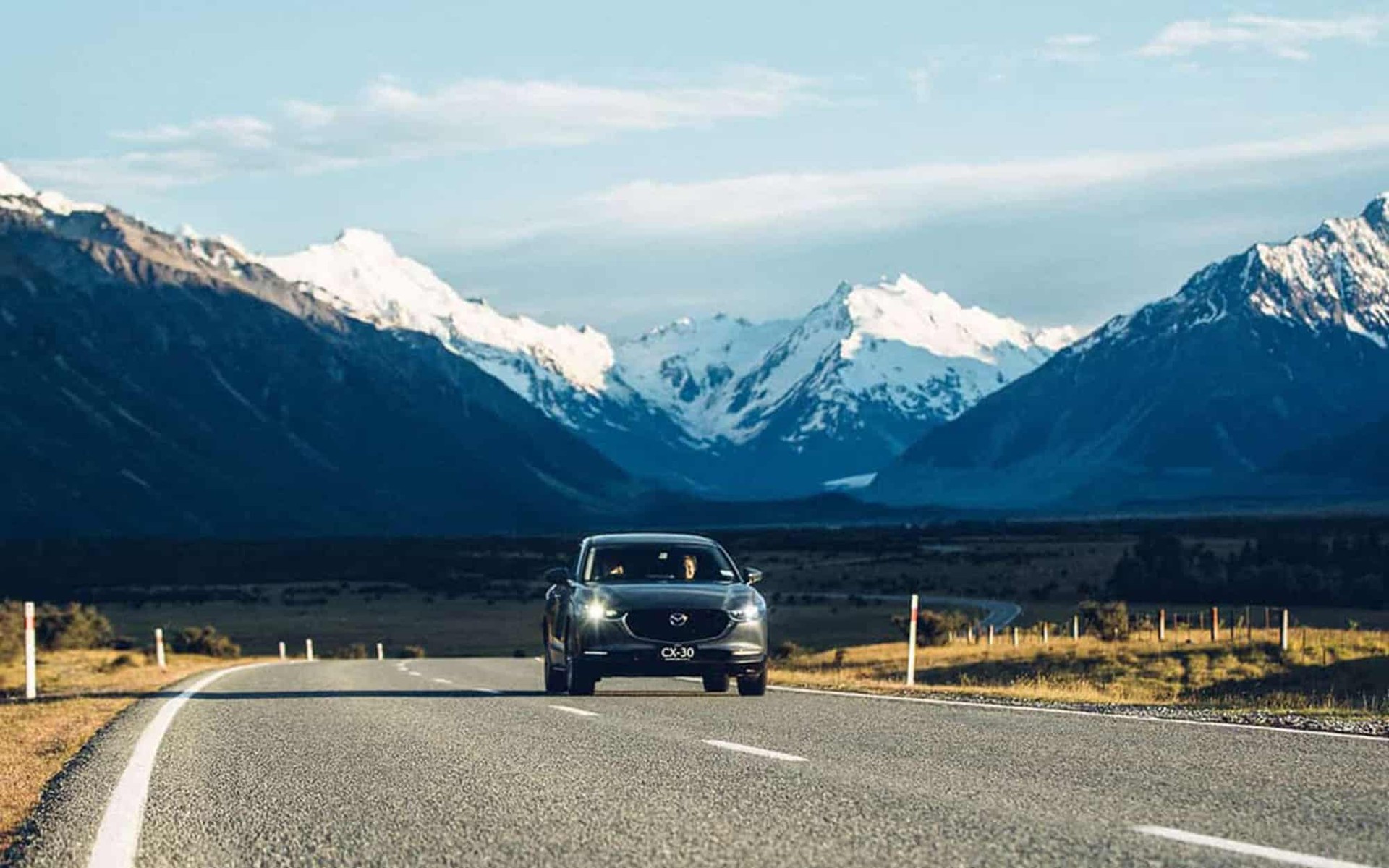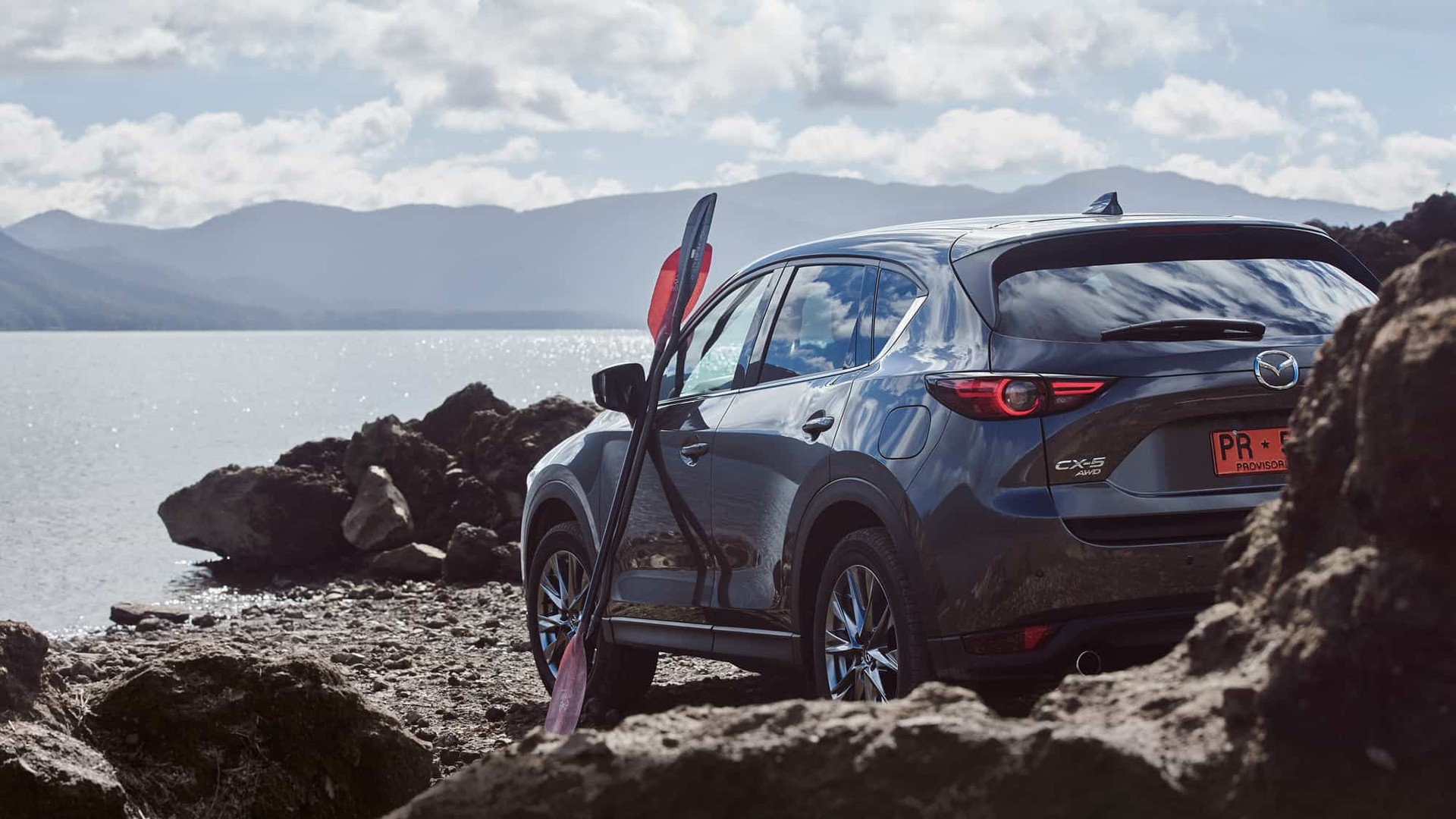
EXPLORE
Cruising Chile in the all-wheel-drive Mazda CX-5
Whether shrouded in clouds or illuminated by incandescent sunlight, Chile provides the perfect backdrop for a thrilling road trip. We go exploring in an all‑wheel‑drive Mazda CX‑5.
Watching the sun set from midway up Villarrica volcano, the skyline ahead of me is awash with painterly shades of pinks, oranges, purples and blues, and the three lakes I can see glimmer like slivers of silver cutting through the valleys below. Immediately behind me, however, the top of the active volcano is disappearing from view under a cloud that slowly creeps down and cloaks the bright orange ski-lift chairs one by one. The temperature drops quickly. This is Chile; a land of geographical extremes. And all of the classical elements are revealed right here in this one moment: earth, fire, air and water.
Wedged for 4,300 km between the Pacific Ocean to the west and the Andes to the east, Chile’s dramatic environments draw thousands of global visitors annually. Many go north from Santiago, the capital, to experience the dry extremities of the Atacama Desert, but we’re in the Lake District in the south, where the climate and landscape couldn’t be more opposite.
Rewind a few days and we’re in university town Temuco, once home to Nobel prize-winning poet Pablo Neruda. We’ve come to pick up our faithful companion for the week, a Machine Gray Mazda CX‑5. As we drive to our hotel in Pucón, the sky is a dull grey and the pastoral landscape is flat. There is little that’s noteworthy until the road begins to introduce gentle curves and we find ourselves cruising past forested foothills and catching glimpses of Lake Villarrica on our left.
The rain continues to drizzle lazily as we pull up to the hotel. We know that somewhere around here is a volcano, we just can’t see it, so we have dinner and enjoy a glass of Chilean pisco sour before retreating to our rooms for the night.
Now, it may sound like for the purposes of this story I’ve made up what happens next but I really haven’t. The following morning I open the curtains to be greeted by blue sunny skies and slap bang right in front of me is Villarrica, quietly puffing away, guarded silently by green jagged rocky hills. And the cherry on the cake is the Patagona gigas (giant Hummingbird, a native species) that strums its wings as it sucks nectar from the flowers just below my balcony. It’s only 7am and I haven’t even left my room, yet I’ve already checked off two things from my Chilean wishlist. Exotic birds? Tick. Volcano? Tick. What could possibly be next today?
Raring to go, we load up the CX‑5 with our backpacks, bottles of water, coats and sunscreen, and hit the road. Excitedly, we drive straight to the volcano, unsure if we’ll get another clear day like this again while we’re here. The asphalt road climbs steadily at first before it becomes gravel and conditions become noticeably trickier. Our all-wheel-drive Mazda makes light work of it, however, practically skipping over the stones, allowing us to enjoy the view of the snow-capped volcano that looms ahead. The higher we climb, the more the road twists and turns and blind corners become standard. We note the impressed glances thrown our way by the locals in their pick-up trucks and continue as far as we can until we reach a plateau.
It is from here that tour guides take hikers up to the smoking summit—but only if timing and conditions are right. It takes at least eight hours to climb the 2,847 meters up and back (and that is if you are super-fit), so we’re informed that pre-dawn starts are essential. Today, we simply take in the stunning view before getting back in the car and heading off to explore more of Villarrica National Park.
“As we pull over to appreciate the full majesty of Lanín volcano, a forest of monkey puzzle trees towers over us.”
Passing numerous street dogs, who clearly know their green cross code as they politely step aside to let us through without any beeping horn required, we drive for about 40 minutes, enjoying the soundtrack through the Bose sound system, until we simultaneously chorus: “Wow!” For in the distance, peaking from behind the beautiful autumnal-colored rocky hillsides is Lanín, another snow-capped volcano. Unlike Villarrica, this one is dormant but no less an impressive sight.
As the views in front and in our rear view mirror provide such breathtaking scenery, we drive spiritedly up the ascending road; the Mazda CX‑5 hungrily eats up each switchback. We pass a small lake that sparkles in the sunlight, an eagle hovering overhead, and eventually pull over, just 10 km from the Argentinian border, where we can appreciate the full majesty of Lanín. A forest of native monkey puzzle trees towers over us. As we drive back to the hotel that night, we contemplate what riches Chile will spoil us with the following day.
It is no wonder that most of the people we speak to tell us they would never dream of leaving this region, Araucania. In fact, many of them say they came as holidaymakers or students from Santiago or other cities and didn’t go back.
Paola Carrasco and Andres Bozzolo Openshaw are two such people. The two friends met through a shared passion for outdoor sports. Neither is originally from Pucón, but the fresh air, healthy lifestyle and meeting their respective partners ensured they were never going to return to a hectic urban life. Standing on the empty black sandy beach on the shores of Lake Caburgua, we watch them take their kayaks out on the perfectly still water, amid the early morning mist.
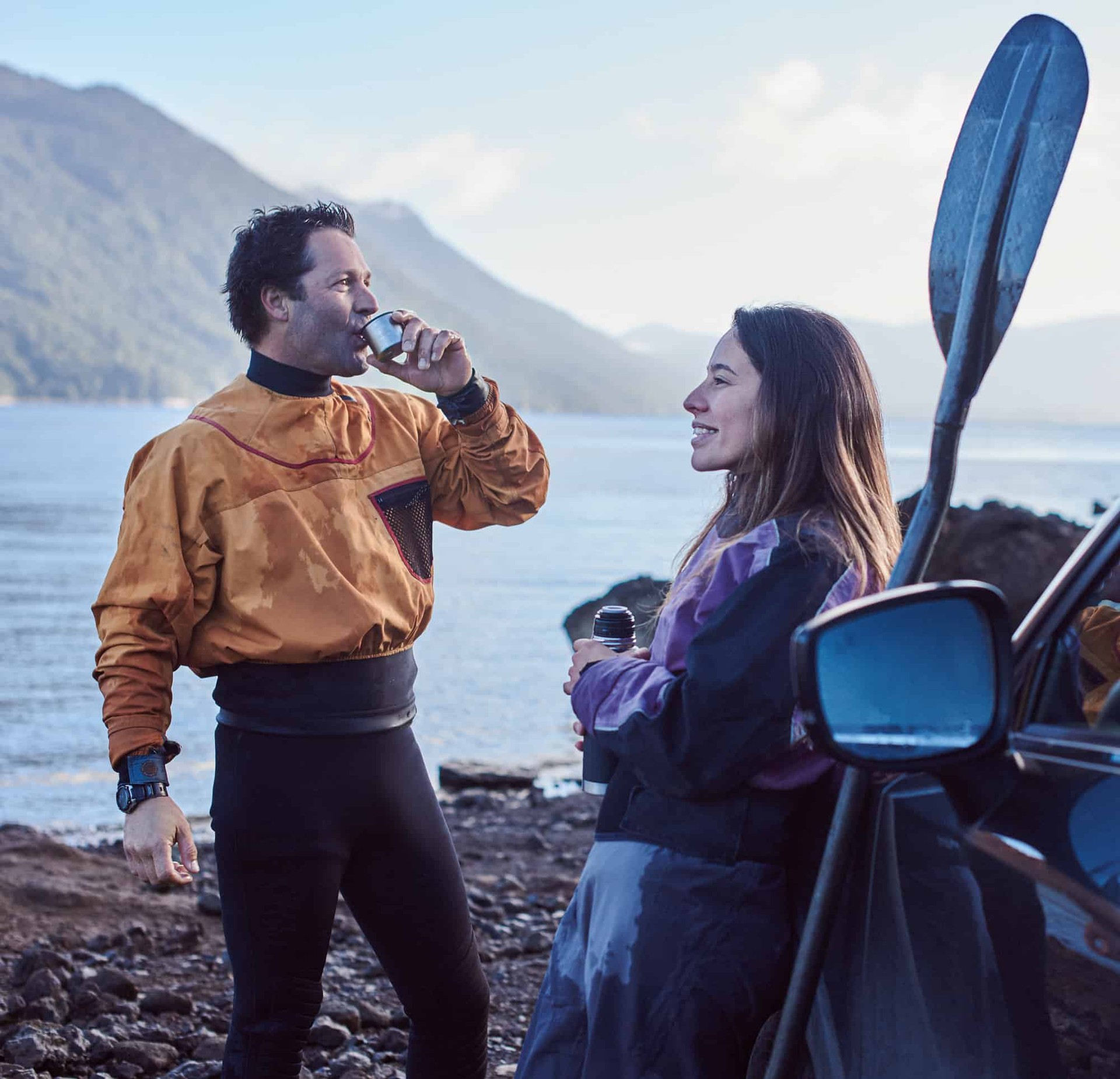
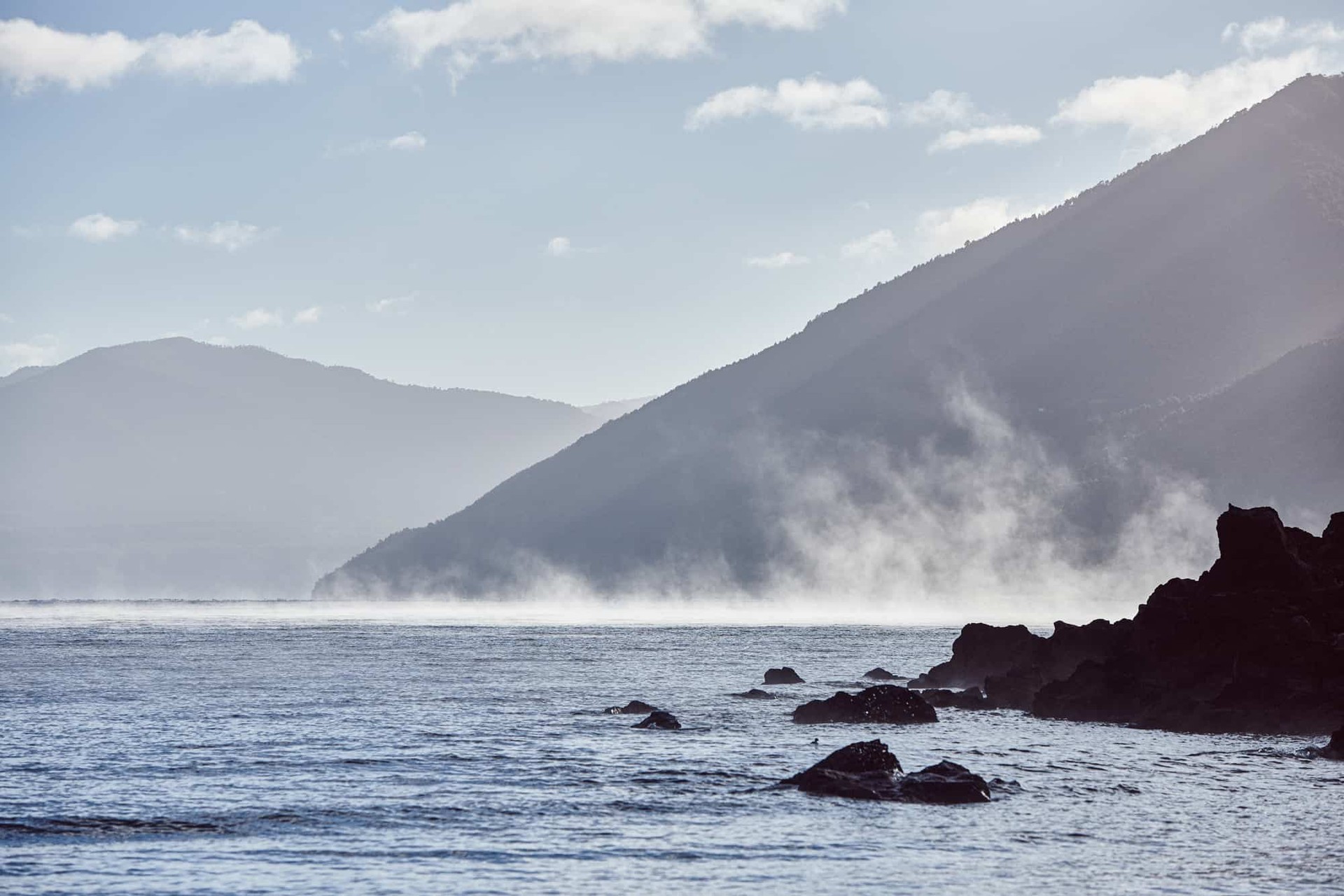
It is autumn in Chile. “In the summer the beach here and at Villarrica would have been packed,” Andres tells us. Paola says the time she is most looking forward to is in a few weeks, when there will have been enough rain to fill the rivers. Canoeing on rapids is her thing and she teaches beginners how to do it, too. “Sometimes I am scared as it can be dangerous,” she says, then breaks into a smile and declares, “but it is also the best feeling when you have mastered it.”
Pucón is the perfect center for lovers of the outdoors. It has a charming ski-resort feeling, with plenty of good restaurants and shops that sell all-weather clothing and outdoor gear. That night we eat at Andres’s wife’s restaurant, Trawen. All the food is locally sourced and mostly organic, and I can confirm the empanadas are exceptional. Andres and his wife, Pamela Yolito, are an entrepreneurial couple and very much into promoting sustainable eco tourism in the area. Their latest project involved building bothies on the nearby mountain range so Andres can take intrepid thrill seekers hiking for a few days at a time once the winter snowfall takes hold. Andres also leads groups to the Villarrica Volcano summit. He tells us that, aside from the gruelling hike, once you reach the snow, crampons and ice axes are a necessity and so is a mask to protect you from the sulphurous fumes emitted from the volcanic smoke. “At the most you can stay ten minutes but then you have to get away,” he explains.
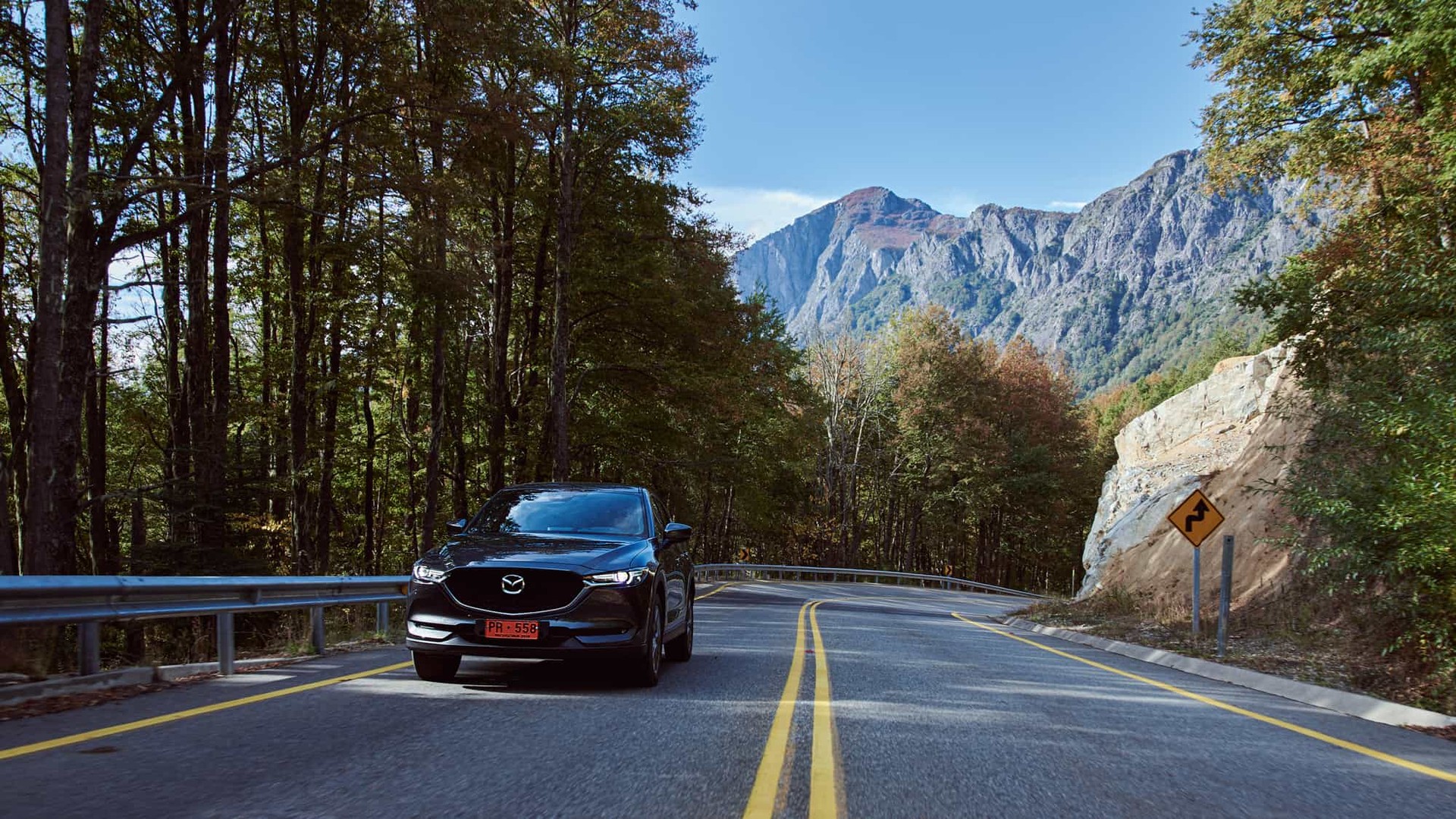
Mazda CX‑5
The Mazda CX‑5 has all the elements to tackle an epic adventure like our experience in Chile. We found there’s more than enough space for four occupants to stretch out and get comfortable, and plenty of room to carry all our gear. The variable nature of the Chilean road surfaces meant that i‑Activ AWD was invaluable and ensured a stable drive at all times. Typically agile Mazda handling is aided by G‑Vectoring Control Plus, which meant that twisty roads were relished rather than feared. Plus, the i‑Activsense safety features provided constant reassurance, no matter how arduous the journey.
The following morning the clouds have descended again and it is raining. A lot. Well, if we’re going to get wet we may as well do it in style, so we drive to Termas Geométricas, one of the world’s biggest natural hot springs. The last seven kilometers of the drive are on a narrow, winding dirt track that skims the edge of a raging river (sometimes a little too closely for my liking). Again, the Mazda CX‑5 navigates it effortlessly.
Co-owner Matias del Sol tells me about the arduous two-year process it took to create the 17 thermal baths. Fifty people diverted the river four times in order to access and isolate the hot water, and build the spas. And all the work, including turning the narrow cattle path into the road we drove along, was done by hand.
The wooden footbridges that lead to the pools are bright red, as if framing a painting, but here nature is the artwork. The 35°C pools and the sound of the river that flows below and around you could easily lull you into a deep sleep, so a quick duck under the ice cold waterfall really wakes you up.
“It took 50 people two years to create the 17 thermal baths at Termas Geométricas. The river was diverted four times and all the work was done by hand.”
It is still pouring with rain when we leave, so we take a detour to Hotel Antumalal on the hillside above Lake Villarrica. This immaculate boutique hotel is exactly as it was when it was built in the late 1940s. Influenced by the Bauhaus style, it is uber cool and it feels like we’re in a James Bond villain’s lair. Sitting by a roaring log fire, drinking a cortado, I get chatting to Martin Araneda Mayenberger. Martin runs a business that specializes in regenerative tourism—encouraging people to actively connect with the land and local communities, and not simply buy the “I was here” T-shirt.
Martin invites us to meet some people from the Mapuche, the indigenous inhabitants of this part of Chile. Historically fearsome warriors, they defeated both the Maya and the conquistadors to retain this area as their own. The gorgeously welcoming Rosario Colipi invites us into her home, which is a ruka—a wooden frame covered by thatch made from a hardy, local bamboo-like plant. Inside, she tells us about her way of life, shows us how she bakes bread (with the dough placed straight into the ash) and plays us music, with each tune ending in a celebratory “Yeh, yeh, yeh.” We even get to play a hockey-style game of Palin with her husband Don Florencio and a couple of their grandchildren before we sit down to eat together. Rosario tells me the Mapuche people are guided by dreams—and it was that which inspired her to open up her home regularly to visitors from around the world. It is her way of keeping the Mapuche’s ancestors’ spirits alive.
“Hotel Antumalal’s design was influenced by the Bauhaus style. It is uber cool and feels like we’re in a James Bond villain’s lair.”
The next day there’s a break in the clouds so we head to the beach via the busy city of Valdivia, where we make a quick stop for lunch—the freshest ceviche I’ve ever tasted—and wander around the fish market. Behind it, sealions laze in the river, engorged by fish guts and heads provided by the stallholders.
Back on the road, we follow the increasingly wide Rio Valdivia. The boats change from pretty little pleasure cruisers to fishing trawlers then enormous tankers until finally the Pacific Ocean stretches out before us. Colossal waves roll endlessly one into the other, while all shapes, sizes and colours of beach houses cling to the cliffs. It feels like we could be on California’s Pacific Coast Highway and the drive is so enjoyable we keep going, no destination in mind or worries about time. After an hour or so, however, we have to stop. There is no more road, just a café perched atop a precipice. Behind it lies another national park, Oncol, and the now familiar sights of lush green hills and wisps of clouds rising up from the moisture of the forest. We have no choice but to turn around and go back the way we came. We are delighted.
On our last night, we take the Villarrica volcano road once more to witness the setting sun. Chile’s natural magnificence is a humbling experience. It’s difficult to say goodbye but we do have to go home. Whether you come here to tick things off your bucket list or a gap-year schedule, I guarantee you’ll find a little bit of this place will have nestled its way into your soul. Chile never leaves you.
Words Anna Muggeridge / Images Rama Knight

find out more
Brave the elements
Embark on your next adventure with the Mazda CX-5
